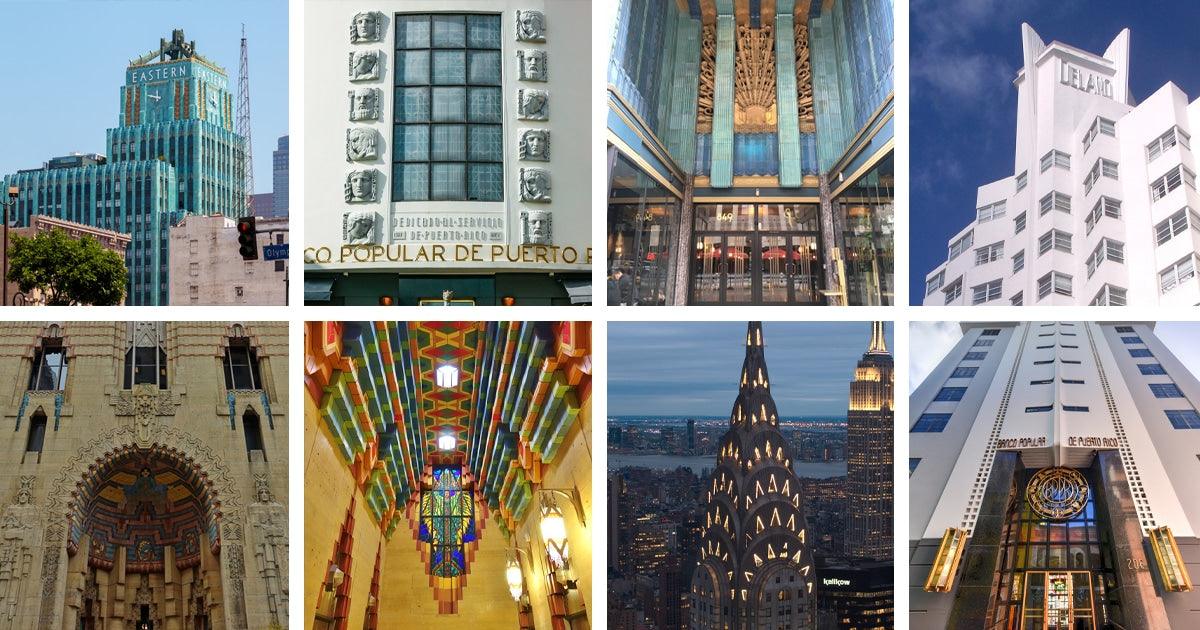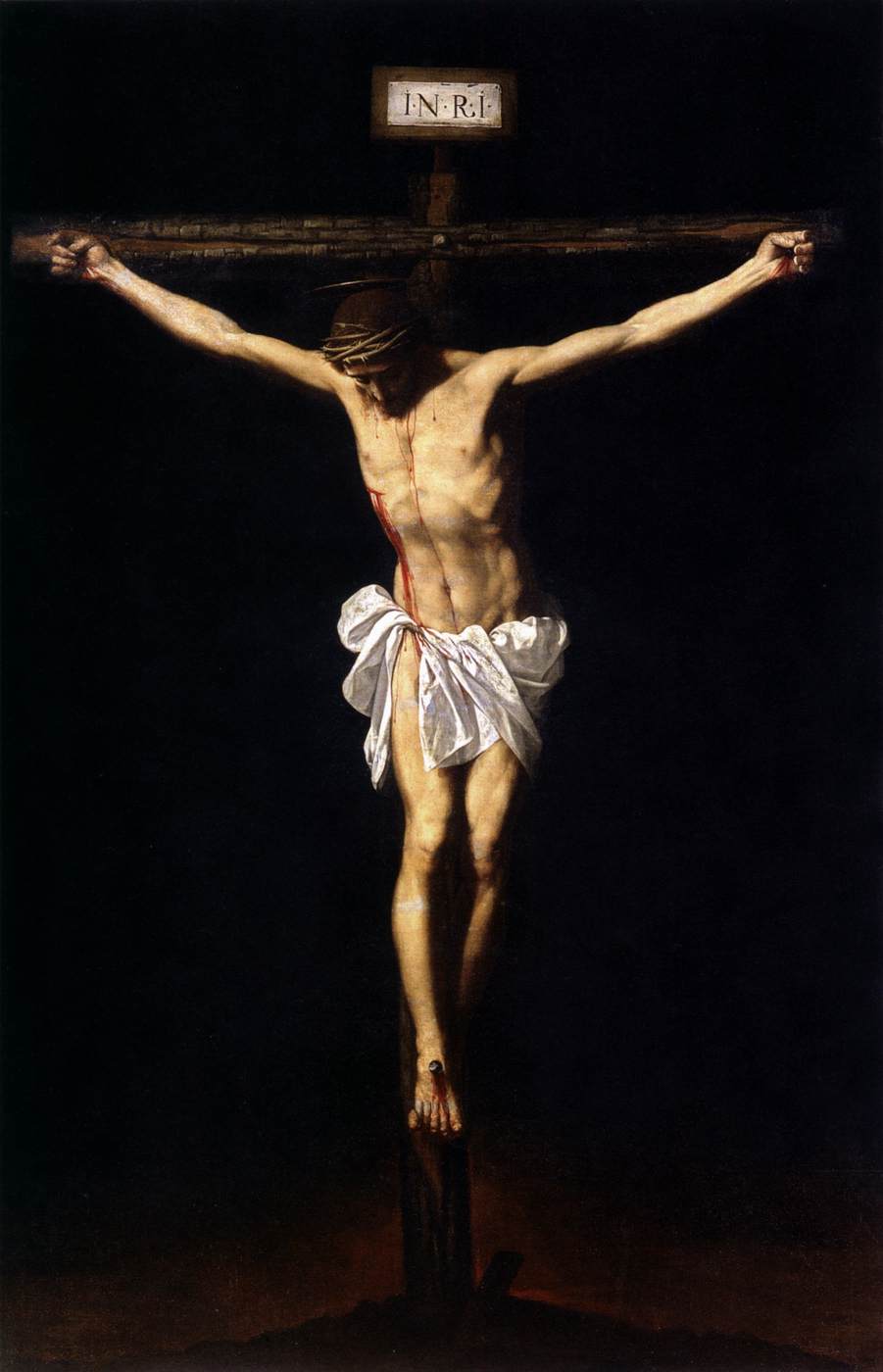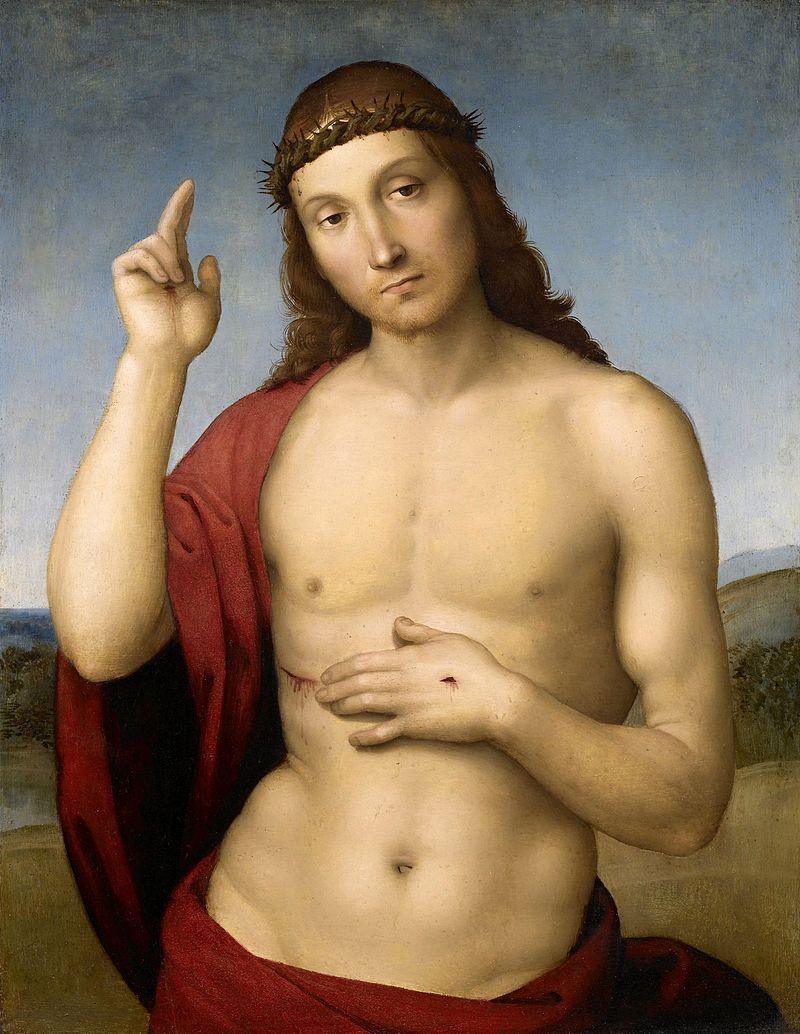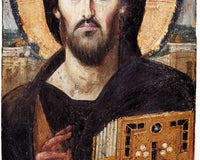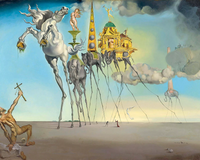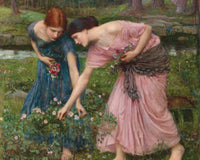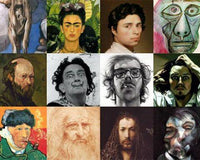
Art Deco is a popular design style from the 1920s and 1930s characterized particularly by elegant geometric or stylized forms and by the use of man-made materials.
The characteristics of the Art Deco style originated in France in the mid to late 1910s, matured during the International Exposition of Decorative Arts and Modern Industries held in Paris in 1925, becoming an important style in Western Europe and the United States during the 1930s.
The defining features of Art Deco reflect an admiration for the modernity of the machine and for the design qualities inherent in machine-made objects, such as relative simplicity, flatness, symmetry, and invariable repetition of elements. Art Deco objects often exhibit simple and clean forms, generally with a "stylized" appearance; geometric or stylized ornamentation derived from figurative forms like flowers, animals, and sunrays; and the use of man-made substances, including plastics, vitrified glass, and reinforced concrete, often combined with natural materials such as jade, silver, ivory, and chrome.
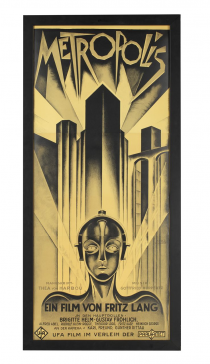
Art Deco - poster
Among the formative influences of Art Deco are Art Nouveau, the Bauhaus, Cubism, and Serge Diaghilev's Ballets Russes. Practitioners of Art Deco also found inspiration in sources from American Indians, Egyptians, and early classical styles, as well as in nature.
Like Art Deco, art nouveau is an ornamental style that applies to media such as architecture, interior design, jewelry, and illustration. Both styles were popular in Europe and the United States, but Art Nouveau flourished earlier, between 1890 and 1910.
In turn, Art Deco reached its peak in the late 1920s and early 1930s. Art Nouveau emphasized nature, and objects were characterized particularly by asymmetrical sinuous lines, often taking the form of flower stems and buds, tendrils of vines, insect wings, and other delicate natural objects. Art Deco, on the other hand, celebrated the modern machine and promoted geometric lines and elegant forms.
Its main difference from art nouveau is the influence of cubism, which gives Art Deco design a more fragmented geometric character. However, images based on plant forms and sinuous curves have remained in some Art Deco designs, for example, that of Clarice Cliff in Britain. Art Deco was very varied in its influences, drawing inspiration from ancient Egyptian art, Aztec art, and other ancient Central American art, as well as from the design of modern ships, trains, and automobiles. It was also inspired by modern architecture and design of the Bauhaus and architects such as Le Corbusier and Mies van der Rohe.
Art Deco derived its name from the Exposition Internationale des Arts Décoratifs et Industriels Modernes, held in Paris in 1925, where the style was first exhibited. Art Deco design represented modernism turned into fashion. Its products included both individually handcrafted luxury items and mass-produced goods, but in any case, the intent was to create an elegant and anti-traditional elegance that symbolized wealth and sophistication.
Most of the prominent creators of Art Deco designed handmade or limited edition items. They included furniture designers Jacques Ruhlmann and Maurice Dufrène; architect Eliel Saarinen; silversmith Jean Puiforcat; jewelry and crystal designer René Lalique; fashion designer Erté; jewelry artists Raymond Templier, HG Murphy, and Wiwen Nilsson; and figurative sculptor Chiparus.

Art Deco - furniture by Jacques Ruhlmann

Art Deco by silversmith Jean Puiforcat
Beginnings of Art Deco
At the end of the 19th century in France, many notable artists, architects, and designers who had played an important role in the development of the Art Nouveau style recognized that it was becoming increasingly out of fashion. At the end of a century that saw the strengthening of the Industrial Revolution, contemporary life became very different from that of a few decades before. It was time for something new, something that shouted "20th century" from the modernist and tasteful rooftops.
The Society of Decorative Artists of France
From this desire to move toward the new century at the pace of innovation rather than being held back by nostalgia, a group of French artistic innovators formed an organization called Société des Artistes Décorateurs (The Society of Decorative Artists). The group was composed of recognized figures such as Art Nouveau designer and engraver Eugene Grasset, and Art Nouveau architect Hector Guimard, along with emerging decorative artists and designers like Pierre Chareau and Francis Jourdain. The French state supported and encouraged this direction of artistic activity.

Art Deco - The Society of Decorative Artists
One of the main objectives of the new group was to challenge the hierarchical structure of the visual arts that relegated decorative artists to a status lower than the more classic media of painting and sculpture. Jourdain is famously quoted: "Therefore, we decided to return decorative art, treated thoughtlessly as a Cinderella or a poor relative who was allowed to eat with the servants, to the important, almost preponderant place it occupied in the past, at all times and in all times" of the countries of the globe."
The plan for a grand exhibition showcasing a new type of decorative art was originally conceived for 1914, but had to be postponed until after World War I, and then delayed for various reasons until 1925.
The Exhibition that officially launched the Art Deco movement
The French government, which hosted the exhibition between the esplanade of Les Invalides with its golden dome and the entrances of the Petit Palais and Grand Palais on both sides of the Seine River, strove to showcase the new style. More than 15,000 artists, architects, and designers exhibited their work at the exhibition. During the seven months of the exhibition, more than 16 million people visited the many individual exhibits. This exhibition was the catalyst for the beginning of the movement.
Art Nouveau and Art Deco
Art Deco was a direct aesthetic and philosophical response to the Art Nouveau style and the broader cultural phenomenon of modernism. Art Nouveau began to go out of fashion during World War I, as many critics felt that the elaborate details, delicate designs, often costly materials, and the production methods of the style were ill-suited for a challenging, unstable, and increasingly mechanized modern world. While the Art Nouveau movement derived its intricate and stylized forms from nature and exalted the virtues of the handmade, the aesthetic of Art Deco emphasized the aerodynamics and elegant geometry of the machine age.
Art Deco and Modernism
The Exposition Internationale gathered not only works in the Art Deco style but also placed handcrafted items alongside examples of avant-garde paintings and sculptures in styles such as cubism, constructivism, the Bauhaus, De Stijl, and futurism. In the 1920s, Art Deco was an exuberant yet largely conventional counterpoint to the more cerebral Bauhaus and De Stijl aesthetics. The three shared an emphasis on clean and bold lines as an organizing design principle. Practitioners of Art Deco embraced technological innovation, modern materials, and mechanization, and sought to emphasize them in the overall aesthetic of the style itself. Practitioners also borrowed and learned from other modernist movements. Art Deco came to be regarded by admirers who were in tune with the futuristic perspectives of contemporary avant-garde movements. Ironically, modernist painting and sculpture played a secondary role in the exhibition, with the few exceptions of the Soviet pavilion and Le Corbusier's Esprit Nouveau pavilion.
Art Deco after the Great Depression
The onset of the second phase of Art Deco coincided with the beginning of the Great Depression. Austerity could indeed be the central aesthetic for both pragmatic and conceptual reasons for this second development of Art Deco. While Art Deco architecture, for example, had been oriented vertically with skyscrapers that soared to great heights, later Art Deco buildings with their mostly unadorned exteriors, elegant curves, and horizontal emphasis symbolized robustness, quiet dignity, and resilience. During the worst years of economic disaster, from 1929 to 1931, American Art Deco moved from following trends to establishing them.
Streamline Moderne
Streamline Moderne became the American continuation of the European Art Deco movement. Beyond the serious economic and philosophical influences, the aesthetic inspiration for early Streamline Moderne structures were buildings designed by proponents of the New Objectivity movement in Germany, which emerged from an informal association of German architects, designers, and artists that had formed in the early 20th century.

Art Deco - Streamline Moderne
Artists and architects of the New Objectivity were inspired by the same kind of sober pragmatism that compelled supporters of Streamline Moderne to eliminate excesses, including the emotionality of expressionism. The architects of the New Objectivity focused on producing structures that could be considered practical, as a reflection of real-life demands. They preferred that their designs adapt to the real world rather than making others conform to an impractical aesthetic. To that end, the New Objectivity architects even pioneered prefabrication technology (helping to quickly and efficiently house the poor in Germany).
Devoid of adornments, Streamline Moderne architecture featured clean curves, long horizontal lines (including bands of windows), glass bricks, porthole windows, and cylindrical and sometimes nautical shapes. More than ever, there was an emphasis on aerodynamics and other expressions of modern technology. The more expensive and often exotic materials of Art Deco were replaced by concrete, glass, and chrome fittings in Streamline Moderne. Color was used sparingly, as off-white, beige, and earth tones replaced the brighter colors of Art Deco. The style was introduced first in architecture and then expanded to other objects, similar to the traditional Art Deco style.
Art Deco is retroactively named
Originally, the term "Art Deco" was used pejoratively by a famous detractor, modernist architect Le Corbusier, in articles where he criticized the style for its ornamentation, a feature he considered unnecessary in modern architecture. While supporters of the style hailed it as a modernist and simplified response to excessive ornamentation, especially compared to its immediate predecessor, Art Nouveau, as any decoration was superfluous to Le Corbusier. It was not until the late 1960s, when interest in the style was revived, that British art historian and critic Bevis Hillier used the term "Art Deco" positively.
Art Deco in the United States
In the United States, the reception of the Art Deco movement developed on a different trajectory. Herbert Hoover, the U.S. Secretary of Commerce at the time, decreed that American designers and architects could not exhibit their work at the International Exposition because he maintained that the country had yet to conceive a style of art that was clearly American and satisfactorily "new enough." Instead, he sent a delegation to France to assess the offerings at the Exposition and then apply what they saw to a contemporary American artistic and architectural style. Among the contingent of aesthetic emissaries sent by Hoover were significant figures from the American Institute of Architects, the Metropolitan Museum of Art, and The New York Times. The mission inspired an almost immediate surge of artistic innovation in the U.S.
By 1926, a smaller version of the French fair called "A Selected Collection of Objects from the International Exposition of Modern, Industrial, and Decorative Arts" toured many cities in the U.S. such as New York, Cleveland, Chicago, Detroit, St. Louis, Boston, Minneapolis, and Philadelphia. The American world fairs in Chicago (1933) and New York City (1939) highlighted Art Deco designs, while Hollywood embraced the aesthetic and glamorized it nationwide. Even American corporations like General Motors and Ford built pavilions at the New York World Fair.
Art Deco - New York World Fair
Among the most well-known examples of the American Art Deco style are skyscrapers and other large-scale buildings. In fact, the American iteration of Art Deco in building designs has been referred to as Zigzag Modern due to its angular and geometric patterns as elaborate architectural façades. However, American Art Deco in general is often less ornamental than its European predecessor. Beyond the clean lines and strong curves, bold geometric shapes, vibrant colors, and sometimes luxurious ornamentation, the American version is more straightforward. As significant influences such as New Objectivity and the International Style of architecture, as well as serious economic setbacks of the late 1920s and early 1930s, began to influence the Art Deco aesthetic, the style became much less lavish.

Art Deco - Zig Zag Modern
The American Art Deco style developed as a celebration of technological advancement, including mass production, and a restored faith in social progress. Essentially, these achievements could be considered a reflection of national pride. In the 1930s, under Roosevelt's Works Progress Administration (WPA), many of the works that were created were Art Deco, from municipal structures like libraries and schools to massive public murals. The WPA aimed to boost the post-war American economy by creating jobs in public works and sought to serve the community by creating jobs and instilling American values within design. The use of American Art Deco thus brought an expression of democracy through design. Some materials commonly used in Art Deco creations were expensive and therefore out of reach for the average person. However, the use of new or low-cost materials made it possible to produce a wide range of affordable products and thus brought beauty to the public sphere in a new way.
Global growth of Art Deco
The Art Deco style took hold in world capitals as diverse as Havana, Cuba; Mumbai; and Jakarta. Havana has an entire neighborhood built in Art Deco style. The London Underground incorporates the style extensively. The port of Shanghai contains more than fifty Art Deco structures, most of which were designed by the Hungarian Laszlo Hudec. From war monuments to hospitals, cities as far away as Sydney and Melbourne in Australia have also absorbed the phenomenal style.

Art Deco - Laszlo Hudec
The main visual characteristics of Art Deco derive from the repetitive use of linear and geometric forms that include triangular, zigzag, trapezoidal, and chevron patterns. Just like its predecessor, Art Nouveau, when representing objects like flowers, animals, or human figures, these are highly stylized and simplified to maintain the overall aesthetic of Art Deco. The nature and extent of stylization and simplification vary according to the regional iteration of the style. For example, a figure like The Firebird (1922) by French designer René Lalique is elegantly slender and subdued, while the Atlas by Lee Lawrie (1937) outside Rockefeller Center is solid and robust with emphatically linear musculature, although both are considered good representations of the Deco style.

Art Deco - Atlas by Lee Lawrie at the Rockefeller Center
In accordance with the movement's emphasis on modern technology, Art Deco artists and designers exploited modern materials such as plastics, Bakelite, and stainless steel. But when a touch of richness and refinement was needed, designers incorporated more exotic materials such as ivory, horn, and zebra skin. Like the Art Nouveau and Arts and Crafts movements, the Art Deco style was applied much less to traditionally higher-ranking visual arts forms: painting and sculpture.
Art Deco Design
The Art Deco style influenced graphic arts in a way that reveals the influence of Italian futurism with its love for speed and idolization of the machine. Futurist artists used lines to indicate movement, known as "speed lines," which emanated from the wheels of fast-moving cars and trains. Additionally, Art Deco practitioners used parallel lines and conical shapes that suggest symmetry and aerodynamics. Typography was influenced by the international impact of Art Deco, and fonts like Bifur, Broadway, and Peignot immediately recall the style.

Art Deco - Bifur font
In terms of imagery, simple shapes and large areas of solid color evoke Japanese woodblock prints, which had become an important source of influence for Western artists, especially in France, after the end of the isolationist Edo period in 1868. The subsequent influx of Japanese art into Europe had a huge impact. In particular, artists found in the formal simplicity of woodblock prints a model for creating their own distinctively modern styles, beginning with Impressionism.
Art Deco Furniture
Until the late 1920s, cutting-edge furniture design in France primarily consisted of variations of the Art Nouveau style, but simplified and less curvilinear. As the decade progressed, Émile-Jacques Ruhlmann emerged as the leading furniture designer (Ruhlmann had his own pavilion at the 1925 Exposition). While his designs were primarily inspired by 18th-century pieces produced in the neoclassical style, he eliminated much of the ornamentation while still using exotic materials favored by Art Nouveau designers, such as mahogany, ebony, rosewood, ivory, and tortoiseshell. Of course, his pieces were often too expensive for anyone to acquire, except for the wealthiest.
In contrast to Ruhlmann's luxurious designs, which seemed to straddle the Art Nouveau and Art Deco styles, the most definitively Art Deco furniture designer in France was Jules Leleu. He had been a traditional designer until the new style supplanted Art Nouveau and is known for designing the grand dining room of the Élysée Palace in Paris and the luxurious cabins on the first-class deck of the elegant ocean liner Normandie.

Art Deco - furniture by Jules Leleu
In contrast to Leleu and Ruhlmann, Le Corbusier was an advocate of a very stripped-down, unadorned version of the Art Deco style, often creating furniture suitable for the austere interiors of his own architectural structures. His intention was to design prototypes, particularly of chairs, that could be mass-produced and thus affordable for a larger market. It is also noteworthy that Donald Deskey's interior design of the famous New York City landmark, Radio City Music Hall, is an excellent example of the American Art Deco furniture design that still remains intact in its original form today.
Art Deco - furniture by Le Corbusier
Art Deco Architecture
Art Deco architecture is characterized by hard-edged designs, often richly adorned, accented by shiny metallic details. Many of these buildings have a vertical emphasis, constructed with the intention of drawing attention upward. Rectangular shapes, often in blocks, are arranged geometrically, with the addition of spires on the roof and/or curvilinear ornamental elements to provide an aerodynamic effect. New York skyscrapers and Miami's pastel-colored buildings are among the most famous American examples, although the style was implemented in a variety of structures worldwide.
In the United States, the Works Progress Administration helped to popularize Art Deco architecture. Interestingly, the fusion of Art Deco classicism and Beaux-Arts that is seen in many public works of the Depression era is known as PWA Moderne or Depression Moderne.

Art Deco PWA Moderne - Depression Moderne
Subsequent developments: after Art Deco
Art Deco fell out of fashion during the years of World War II in Europe and North America, with wartime austerity making the style seem increasingly flashy and decadent. Metals were recycled for use in the production of armaments, rather than decorating buildings or interiors. Furniture was no longer considered status objects. Other technological advances allowed for cheaper production of basic consumer items, eliminating the need for and popularity of Art Deco designers.
A movement that in many ways sought to break with the past has now become a classic producing supreme nostalgia and is fondly remembered. Since the 1960s, there has been a constant and ongoing interest in the style. Echoes of Art Deco can be seen in mid-century modern design, which carries forward the aerodynamic aesthetic of Deco and revisits the clean simplicity of the Bauhaus. Deco also helped inspire the Memphis Group, a design and architecture movement centered in Milan during the 1980s. Memphis also drew on pop art and kitsch as sources for its colorful and consciously postmodern designs.
CUADROS ©, a famous painting on your wall.

